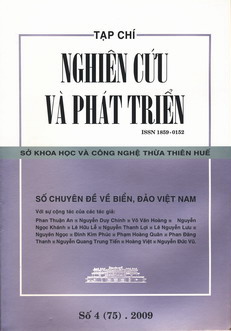Biển, đảo Việt Nam và quy chế pháp lý của nó/Sea and Islands of Vietnam and their Legal Standing
Abstract
Ngày nay, hệ thống pháp luật quốc tế về biển và hải đảo bao gồm những điều ước quốc tế, những tập quán quốc tế, những phán quyết của Tòa án quốc tế, các học thuyết pháp lý quốc tế và pháp luật quốc gia của các nước có liên quan. Tập trung nhất là Công ước của Liên Hiệp Quốc về Luật biển năm 1982, được xem như một bản hiến pháp về biển của cộng đồng quốc tế, có vai trò quan trọng chỉ sau Hiến chương Liên Hiệp Quốc.
Trong quá trình phát triển của công pháp quốc tế về biển, nhà nước Việt Nam đã ban hành nhiều văn bản quy phạm pháp luật đóng góp bổ sung vào nguồn luật quốc tế nhằm tổ chức quản lý biển, đảo có hiệu quả, đồng thời xác định chủ quyền, quyền chủ quyền đối với các vùng biển, đảo của nước ta.
ABSTRACT
Nowadays, the international legal system regarding seas and islands includes international treaties, customs, verdicts of international courts, legal doctrines, and the laws of relevant nations. The most important document is the UN Convention for the Law of the Sea in 1982 that is regarded as a constitution for marine issues of the world. This document is only second to the Charter of the United Nations with regard to its importance.
In the course of the development of international marine law, the Vietnamese government has issued many legal documents that help supplement the international law for an effective management of seas and islands as well as confirm our ownership of the sea and islands of Vietnam.

